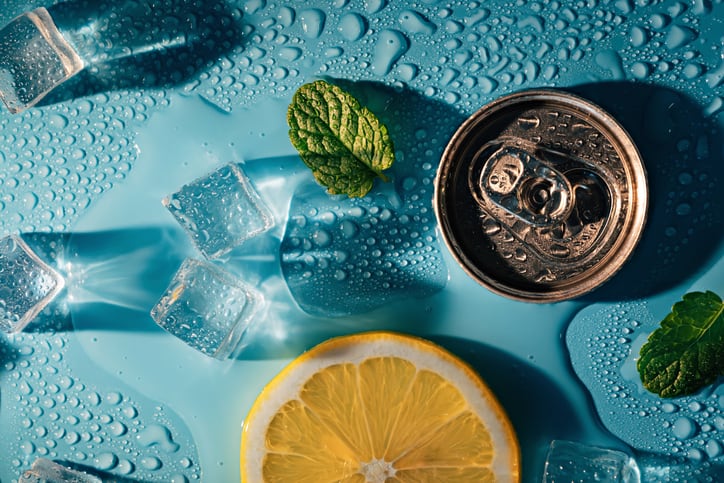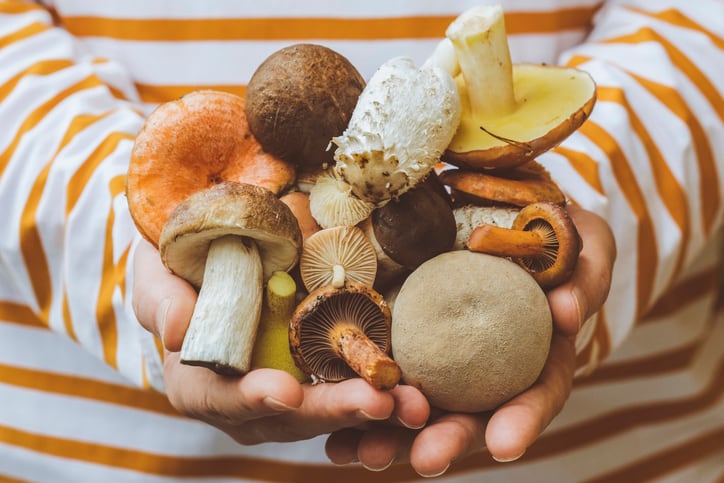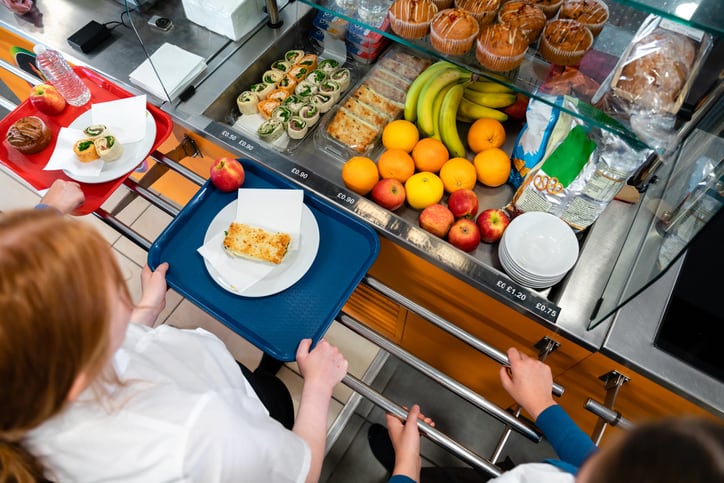In recent weeks, USDA Secretary Brooke Rollins signed waivers for several states to prohibit low-income Americans from using Supplemental Nutrition Assistance Program funds to purchase soda, energy drinks, candy and other categories of food and beverages that legislators deem unhealthy, in part because they traditionally are high in sugar and low in nutrients of desire.
The divisive decisions have earned accolades from some public health advocates and pushback from some industry stakeholders, including retailers who argue the move will cause confusion. They explain retailers will have to determine which products count as ‘soda’ or ‘candy,’ as these terms are not clearly defined, and cashiers will be placed in the awkward position of enforcer.
Enforcement becomes particularly precarious considering the rise of the so-called modern soda set. Are sparkling beverages fortified with nutrients of desire, like fiber, and made with low or no sugar part of the ban? And if so, will their exclusion actually reduce consumer access to a tool that could incrementally help some shoppers reduce their sugar intake by reducing access to a healthier alternative to sugar sweetened beverages?
In this episode of FoodNavigator-USA’s Soup-To-Nuts podcast, better-for-you soda brand Zevia’s CEO Amy Taylor unpacks the potential consequences of soda bans under SNAP on public health and the broader food and beverage industry. She explores what the shift could mean for innovation intended to improve the nutritional profile of products and intake by Americans, and argues for more clarity around the this administration’s public health goals and specific criteria or steps for the industry to proactively help.
Explore past episodes of Soup-To-Nuts podcast
Never miss an episode of FoodNavigator-USA’s Soup-To-Nuts podcast - subscribe today.
Catch up on past episodes of Soup-To-Nuts:
- Prop 65 pushback: Landmark ruling curbs cancer warnings for dietary acrylamide – A landmark federal court decision to block mandatory cancer warnings for dietary acrylamide under California’s controversial Prop 65 is a major win for food manufacturers – and could offer protective precedence for compelling warnings based on shaky science in violation of First Amendment rights
- Eat well, age better: How a subtle shift from wanting longevity to vitaltity is reshaping the food landscape - Consumers want more than a long life - they want a good one, and to get it they are changing what and how they eat, according to new research
- Five strategies to boost share as geopolitical tensions and inflation constrict consumer spending – CPG sales and volumes are slipping among persistent inflation and tariff fears, but Circana uncovers how food and beverage manufacturers are maintaining – and gaining – share despite the shaky market
- Where is the line for ingredient bans and when should companies comply vs pushback? – FDA’s sweeping plan to eliminate synthetic colors from the US food system announced last week marks a turning point in the war on food dyes that has long been fought at the state level and which before that pitted big food against outspoken consumer advocates who often relied on passion and fearmongering more than science
- Better tasting better-for-you beverages: Bold flavors and improved mouthfeel drive growth of functional drink sales – Consumers increasingly are unwilling to compromise taste or health when buying beverages – opening the door for innovative brands that deliver both functional benefits and refreshing experiences
‘We are in the midst of a massive move away from sugar’
As a long-time beverage insider who helped build Red Bull, Taylor acknowledges that it is “ironic” that she “would even approach endorsing any bid that demonizes sugar or soda,” but she argues beverage industry veterans – including herself – have a role to play in nudging Americans to healthier choices.
For Taylor, that role began with acknowledging the science, which she says links excessive sugar consumption to many chronic health diseases, and with acknowledging consumer demands.
“The good news is that science helps you strip away the noise and the opinions and the perspectives and the trends and the politics, and just look at the fact that we are in the midst of a massive move away form sugar. It is global. It is macro, as they say, and it is here to stay. It is also one of the most important dietary and health evolutions that we can societally experience,” said Taylor
She added that consumers are also increasingly aware of sugar’s impact on their health, but they also do not want to give up the foods and beverages they love. That is why Taylor said manufacturers should reformulate without sugar, where possible, so consumers can continue to enjoy “baking with their grandmother” or eating sugar in products where it cannot be removed easily.
She argues removing sugar from soda can significantly reduce consumption given the beverage is in 90% of US households.
“When you’ve got that high of a household penetration, you start to really be aware of why changes in those consumption habits can actually significantly reduce sugar,” she said.
She acknowledged diet and zero sugar options are growing faster than full sugar soda, but “the real disruptor” is natural soda, which she said holds single digit shares of the market but accounts for 25% of the growth of all carbonated soft drinks in North America.
“If you put that on a trajectory, it is possible that this better-for-you subset can have 25%, 30% or 35% household penetration in the foreseeable future,” she added.
Potential barriers to the growth of better-for-you soda are perceived taste, price point and usage occasion, according to Taylor.
She added Zevia is well positioned to address all three as it is “tasting better every day with some of our recent innovations,” and it is “an affordable option within that set.”
Policies should ‘differentiate between beverages that fuel chronic disease and those offering healthy alternatives’
Zevia helped pioneer the modern soda set, but it is far from the only player.
Pre- and probiotic pops have proliferated in recent years. Olipop helped lead the charge, Poppi expanded the category’s consumer appeal with viral social media advertising before it was scooped up by PepsiCo for $1.95 billion in March, following the launch of Coca-Cola’s Simply Pop. Other players in the increasingly crowded category include SunSip, Humm Probiotic Soda, and Live Organic Living Soda.
And then, of course, many of the iconic soda brands that have long dominated the segment are innovating with low-, medium- and no-sugar options.
Given the proactive efforts by many beverage manufacturers to offer low- and no-sugar sodas, Taylor argues it is shortsighted to deride the entire soda segment. She says she would rather policymakers “differentiate between beverages that fuel chronic disease and those offering healthy alternatives.”
One way, she says, this can be done is by clarifying criteria around what qualifies a healthier choice and boldly labeling products in a way that consumers can quickly decipher their health impact and make an educated decision about what to buy.
Taylor also argues SNAP limits on “soda” are not going to fundamentally reduce consumption of sugar because it only applies to about 13% of the US population who receive SNAP benefits, and because low-income shoppers can still buy soda with their own money.
But, she argues, prohibiting “soda” under SNAP could limit access to better-for-you options that may be slightly more expensive than their conventional counter parts. If lower income consumers cannot use SNAP funds to buy a better-for-you option, they may choose the less expensive conventional choice to buy with their own money.
She also notes that while Zevia is categorized as a soda, it competes with flavored carbonated water – some of which are now flavored as “soda,” which complicates the question of what should or should not be covered.
Seizing MAHA’s promise
While the current conversation about how to reduce sugar is far from perfect, Taylor said she is optimistic and sees upside from the focus on food placed by the Make America Health Again movement – but, she adds, for change to succeed long term and within the mainstream then it needs to be based in science.
“I think big food and big beverage ae earnestly trying to figure out a way to partner with the government to do the right thing. And, what is cool is they can move and we move together, we can start to set new norms that the consumer accepts,” she said.
But, she added, “let’s allow science to dictate what does or doesn’t belong in our foods. If we think there is ambiguity. Let’s bring labeling clarity and let the consumer decide,” she said.
2025 promises to be a ‘breakout year’ for Zevia
With that in mind, Taylor said she believes this year will be a breakout year not only for better-for-you soda, but Zevia in particular, which she says is gaining traction with mainstream consumers.
She explained that the brand, alongside other players in the modern soda set, are being displayed more prominently in store alongside conventional options, which is where Taylor says purchase decisions are made.
Likewise, the brand has “found our voice” with compelling and memorable marketing, including a campaign featuring the crossover musician Jelly Roll in an ad that parodies PepsiCo’s ad featuring Cindy Crawford.
“We are using humor to invite people into a conversation about what does it really mean to be authentic and what does it mean to reject artificiality,” said Taylor.
She added, “We think our brand is really right on time for the current and next generation, both in terms of what they care about and how they talk about, but also the product itself.”




